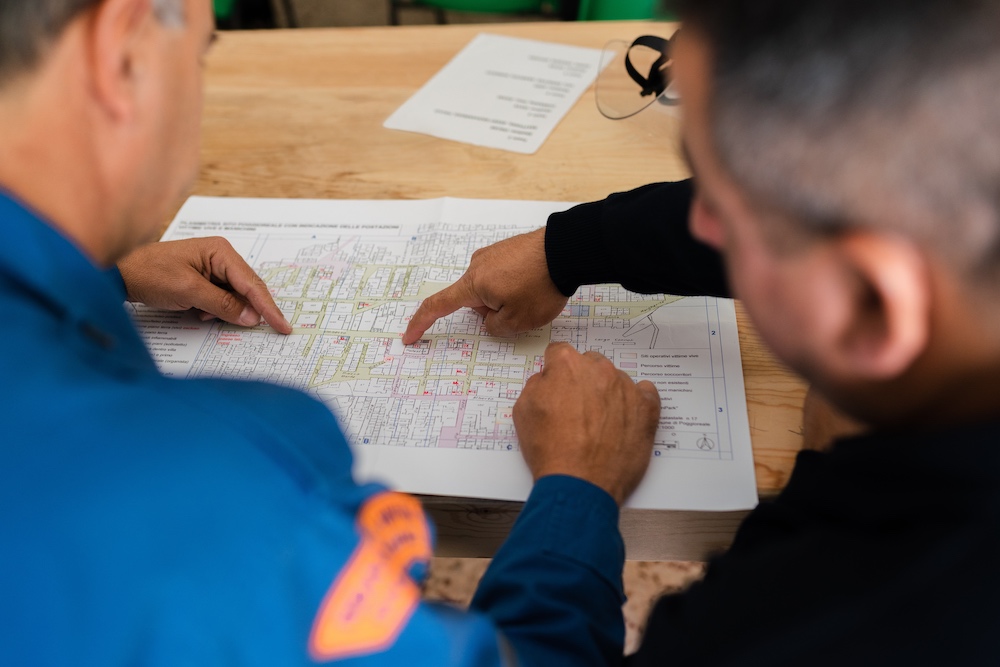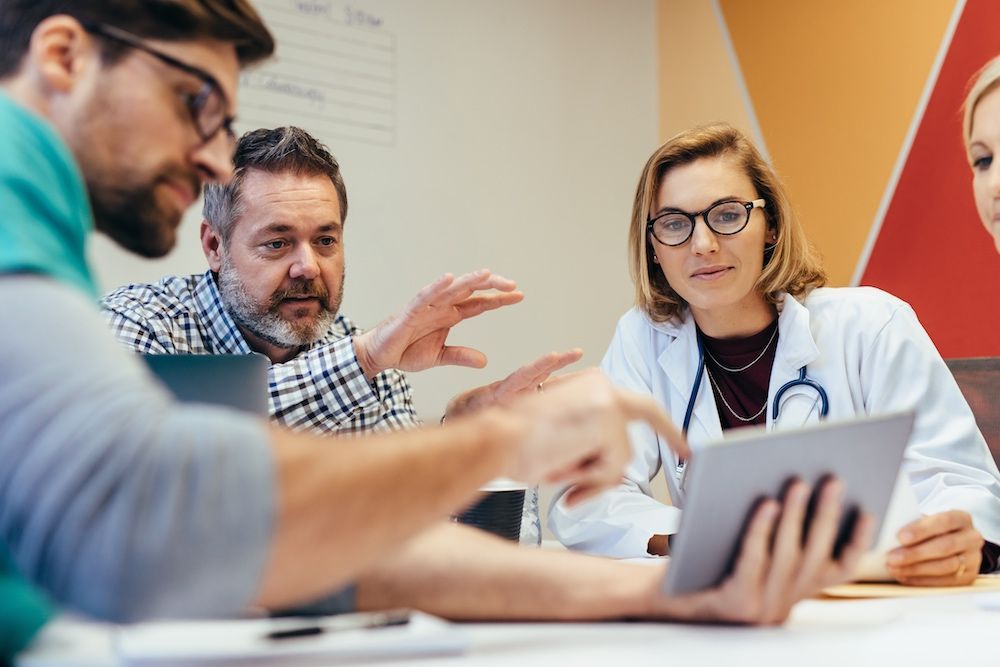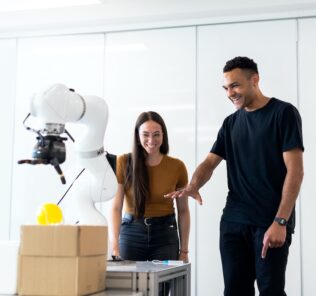Interdisciplinary Collaboration Leads to Advanced Medical Education Innovation
When the general population thinks of medical professionals, many initially think of surgeons, physicians, nurses, emergency medical technicians, and the like. However, many more healthcare workers are considered medical professionals, including healthcare simulation educators and engineers. Together, clinical professionals of different professional backgrounds are starting to join forces to create unique medical solutions – such as healthcare simulation scenarios and technology. This HealthySimulation.com article details how medical professionals of different sectors can work together to develop healthcare simulation solutions.
According to Marion Leary, the director of innovation at the University of Pennsylvania School of Nursing, partnering nursing learners with engineering learners provides an “immense opportunity to combine these two disciplines and allows each respective student group to learn from the other early in their academic careers and expand their way of thinking.” Leary knows this, as her institution has successfully encouraged interdisciplinary collaboration.
Sponsored Content:
She adds that one of her University of Pennsylvania School of Nursing learners, Jessica Abene, was able to work with a team of engineering learners on an innovation project. Today, Abene describes her experience by explaining the importance of this type of interdisciplinary collaboration.
In an article published by American Nurse, Abene shared, “When I decided to attend nursing school at the University of Pennsylvania, I never thought I could participate in healthcare innovation. During my freshman year, I saw and heard about some of my classmates’ innovative work at Penn. It intrigued me that nurses could create useful technology that healthcare workers could use for inpatient care.”
She was then introduced to the idea of nursing and engineering collaboration when a group of engineering learners approached her through a GroupMe (a texting app that clubs use to members can communicate via group chats) club about her clinical experience with babies with NAS. She says the engineering learners wanted to create an innovative way to help comfort these infants during their withdrawal. After discussing the patient population more in-depth, they decided to work together on a “new smart swaddle system specifically designed to help comfort these infants.”
Having noticed how their technical skills and engineering education complemented her clinical skills and nursing education, Abene understood that, without a clinical background, creating products for healthcare that are not only useful but practical would be nearly impossible.
Sponsored Content:
“Nurses understand what innovations are needed and which can realistically be integrated into practice,” she said. “Professionals from various backgrounds work together to create innovations in the real work environment, so why shouldn’t students? For other nursing students looking to collaborate with engineering students, I recommend reaching out to them—it can never hurt to ask!”
In this @myamericannurse article, current #PennNursing student Jessica Abene describes her experience working with a team of engineering students on an innovation project and explains the importance of this type of interdisciplinary collaboration: https://t.co/CwnI86Gl7W.
— Penn Nursing (@PennNursing) May 20, 2022
Additional Instances of Interdisciplinary Healthcare Simulation Collaboration
1) At the UF Center for Experiential Learning and Simulation, research is focused on using clinical simulation to optimize the delivery of healthcare. The institution’s work involves collaboration with healthcare educators, systems and industrial engineers, organizational psychologists, communication scientists, patient safety experts, and frontline clinicians. UF welcomes collaboration with junior and senior faculty interested in using medical simulation to extend their work and build important areas of research and scholarship.
2) Digital enablement solutions provider, AVI-SPL has an experienced team of designers, engineers, and project managers to help improve the educational process of healthcare learners and physicians at university medical training centers and teaching hospitals. The company designs build and support healthcare simulation centers that enable learners to safely train under the guidance of their instructors. These centers feature innovative audio-visual technology solutions that simulate patent care situations and empower schools.
3) The research paper titled “Efficacy of Clinical Simulation-Based Training in Biomedical Engineering Education” describes the use of a clinical simulation-based training (SBT) tool in BME education as an alternative resource to the real-world clinical immersion experience. The paper also explores the possibility of offering cross-disciplinary learning environments in these simulation labs, including engineers and learners from other healthcare disciplines such as nursing. “Simulation labs served as a helpful tool in the need-finding phase of the design process, and the immersed students reported higher adaptive and life-long learning outcomes.”
4) In 2019, the Malone Center for Engineering in Healthcare and the Johns Hopkins School of Nursing announced a new interdisciplinary fellowship opportunity to strengthen collaborations between nurses and engineers at Johns Hopkins. One engineering learner and one nursing student were selected for the fellowship. The fellows worked with faculty in the School of Nursing and in the Malone Center on research that improves patient outcomes through the implementation of science, technological innovation, and systems modeling and optimization. Johns Hopkins nursing and engineering Ph.D. students in their second year of doctoral study or later can now apply.
5) The article, “Improving Biomedical Engineering Education Through Continuity in Adaptive, Experiential, and Interdisciplinary Learning Environments,” shares educators’ experience developing a series of biomedical engineering (BME) courses having active and experiential learning components in an interdisciplinary learning environment. In the first course, BME465: biomechanics, learners were immersed in a simulation laboratory setting involving manikins that were currently used for teaching in the Widener School of Nursing. Each team identified possible technological challenges directly related to the biomechanics of the mannequin and presented an improvement in overcoming the challenge.
This approach of exposing engineering learners to a problem in a clinical learning environment “enhanced the adaptive and experiential learning capabilities of the course.” According to the authors, in the following semester, through BME448: medical devices, engineering students were partnered with nursing students and exposed to clinical simulation scenarios and real-world clinical settings.
They were required to identify three unmet needs in real-world clinical settings and propose a viable engineering solution. This approach helped BME learners to “understand and employ real-world applications of engineering principles in problem-solving while being exposed to an interdisciplinary collaborative environment.”
6) University of Illinois Chicago learners and faculty crisscross campus and traditional disciplinary boundaries to improve healthcare – together. At the UIC Innovation Center, corporate partners provide learners with great opportunities, helping them progress from understanding real-world needs to collaborating on developing new devices and processes to meet those needs.”“Today’s designers are being trained toward interdisciplinary collaboration; no one person can innovate on their own,” Kimberlee Wilkens, Assistant Professor, Industrial Design, shared. “By taking key methods and frameworks of user-centered design processes, something we teach in the School of Design, and providing it to bioengineers and medical students, we are expanding the pool of collaborators and supporting the growth of more agents of change in the incredibly important field of healthcare.”
Learn More About Innovative Clinical Simulation Ideas
Lance Baily, BA, EMT-B, is the Founder & CEO of HealthySimulation.com, which he started while serving as the Director of the Nevada System of Higher Education’s Clinical Simulation Center of Las Vegas back in 2010. Lance is also the Founder and acting Advisor to the Board of SimGHOSTS.org, the world’s only non-profit organization dedicated to supporting professionals operating healthcare simulation technologies. His co-edited Book: “Comprehensive Healthcare Simulation: Operations, Technology, and Innovative Practice” is cited as a key source for professional certification in the industry. Lance’s background also includes serving as a Simulation Technology Specialist for the LA Community College District, EMS fire fighting, Hollywood movie production, rescue diving, and global travel. He and his wife Abigail Baily, PhD live in Las Vegas, Nevada with their two amazing daughters.
Sponsored Content:




















